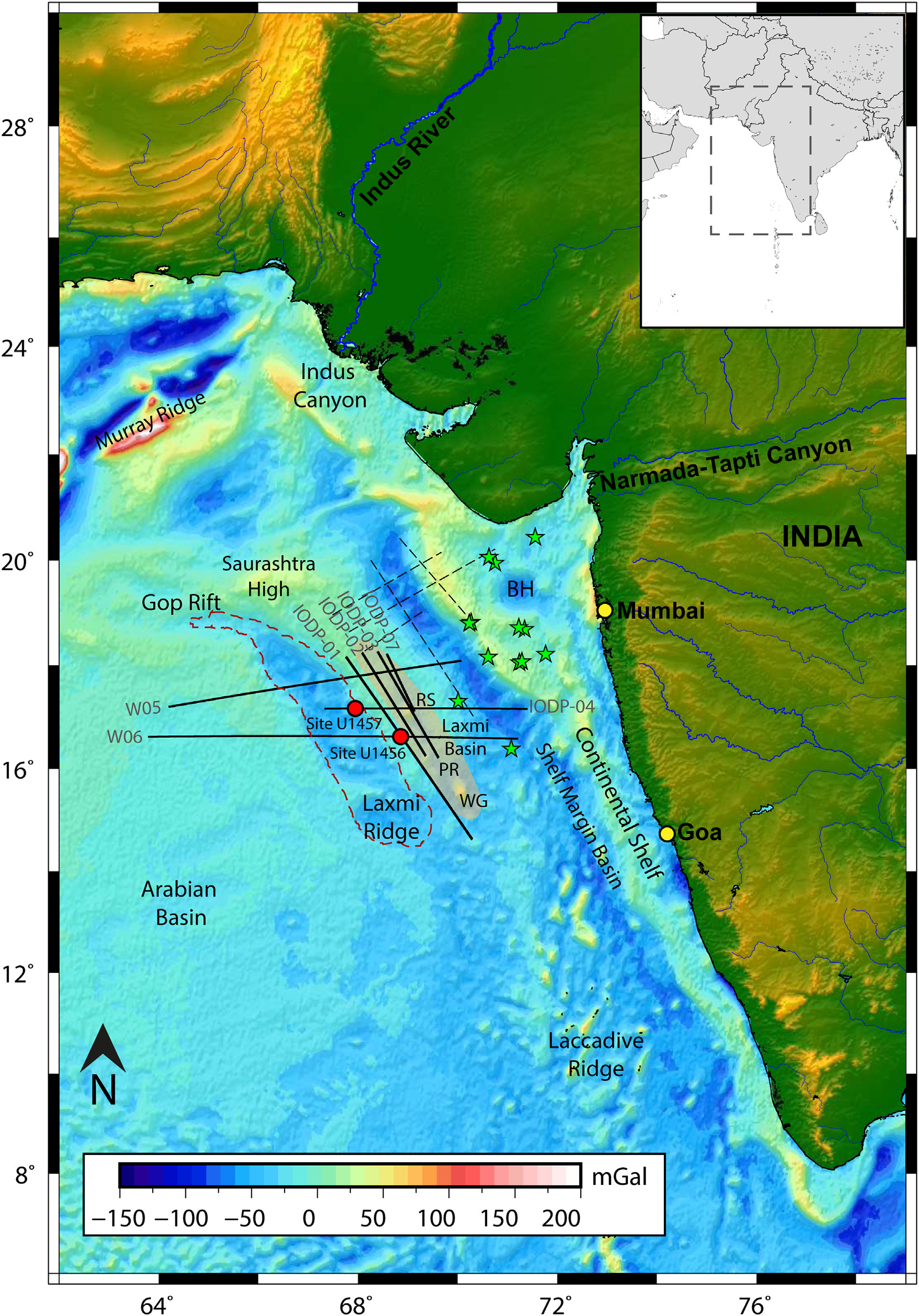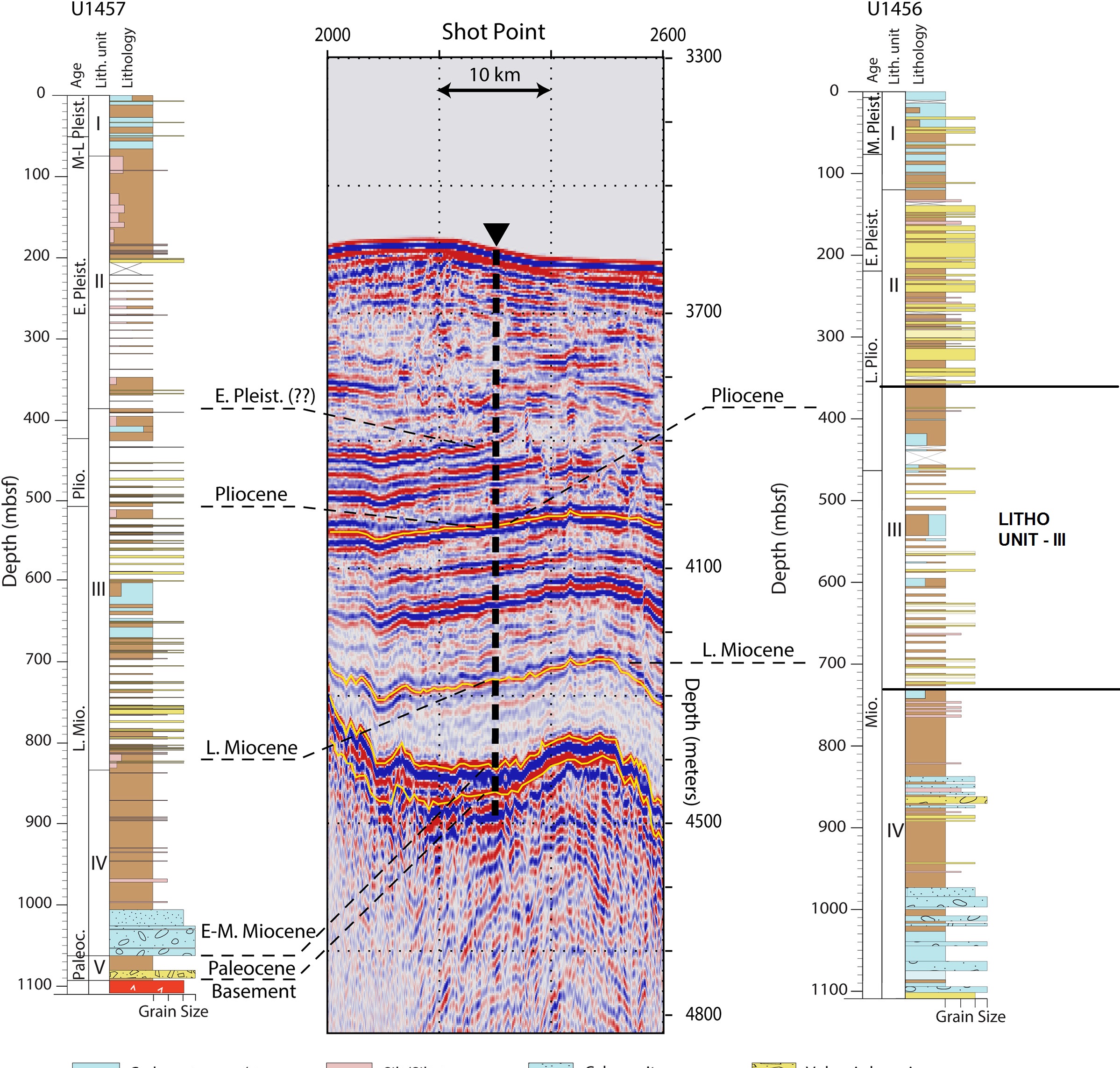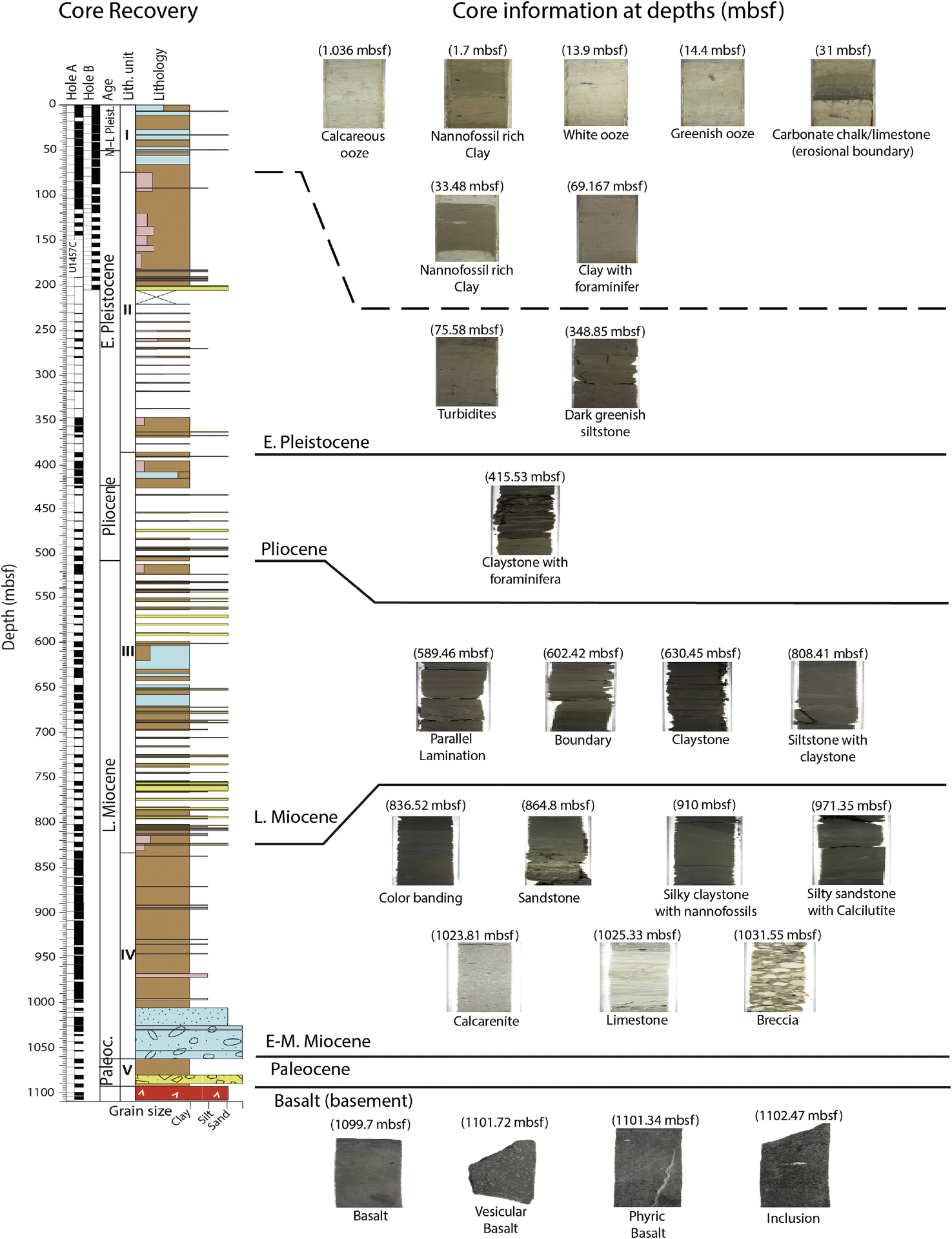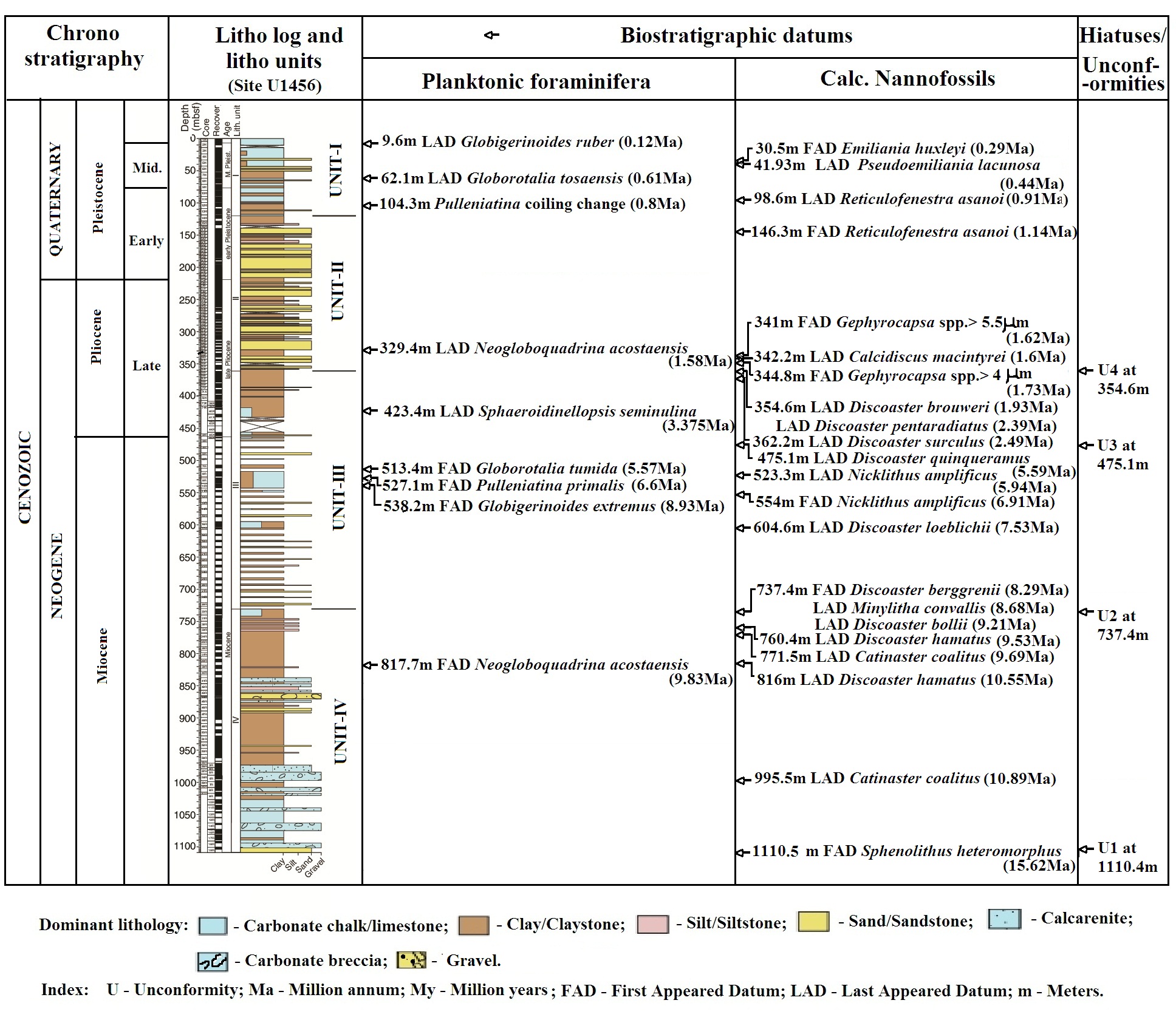Laxmi Basin Informal Lithounit III Fm
Type Locality and Naming
Type section (reference well) is in Site U1456, 360-730 mbsf. [Original Publication: D.K. Pandey, P.D. Clift, D.K. Kulhanek and the Expedition 355 Scientists. (2016). Proceedings of the International Ocean Discovery Program, Vol. 355. Publications.iodp.org]
[Figure 1: Regional free air gravity anomaly map of the western Indian Ocean with mainland topography. The area of study is shown in the inset regional map. Superposed are the major tectonic elements (in black) and locations of seismic profiles (solid black lines) used for the present study. Drill locations of IODP Expedition 355 used to compare the litholog data with seismic sequences are marked in red circles. Green stars denote the location of the exploratory wells (NELP 2007) from the near shelf region. Demarcation of Laxmi Ridge from free air gravity anomaly response is denoted in red dashed lines. The interpretation from seismic profiles IODP-02, IODP-03, IODP-07, W05 and W06 are utilized as constraints for the present study and incorporated to generate the isopach map. The black dashed lines are the locations of published seismic profiles (Pandey et al., 2017; Nair and Pandey, 2018). The distribution of rivers in the Indian mainland is shown in blue. BH- Bombay High; RS- Raman Seamount; WG-Wadia Guyot, PR- Panikkar Ridge. The extent of PR modified from Pandey and Pandey (2015), (after Nisha Nair et al., 2021)]
[Figure 2: Calibration of seismic horizons with sediments recovered from Sites U 1456 and U1457 (Pandey et al., 2016) in the Laxmi Basin. Seismic reflection profile IODP-04 crossing across drill site U 1457 shows the reflection configuration and correlated age from cores. Ages are assigned from the nannofossil biostratigraphic markers (IODP Expedition 355) using the geological time-scale (Gradstein et al., 2012), (after Nisha Nair et al., 2021)]
[Figure 3: Main sedimentary features corresponding to dominant lithology of each interpreted sequence from SiteU1457. The descriptions and depth of the cores are taken from the core log report of IODP Expedition 355, after Nisha Nair et al., 2021)]
Lithology and Thickness
Sandy claystone turbidites. The major lithologies of Unit III consist of light brown to dark green clay / claystone, light brown to dark gray sand / sandstone, light greenish nannofossil chalk, and light to dark greenish gray nannofossil rich claystone. Varying carbonate content, mostly in the form of nannofossils, causes the color difference between different clay different clay layers. Some of the sediment is indurated, but most of the sediment recovered is lithified. The light gray and light brown sand and clay layers are interbedded with sharp erosive boundaries at the base of the sand and show normal grading between the layers. Sand layers include common mica grains. The light grey sand in the upper part of Unit III is different from that of the lower part and includes thin wood fragment-rich laminae. Its thickness is at Hole U1456A = 57.89 m (minimum thickness), Hole U1456C = 55.73m (minimum thickness) and Hole U1456D = 271.90 m; Intervals – Hole U1456A = 361.49-419.38mbsf (total depth), Hole U1456C = 408-463.73mbsf (total depth) and Hole U1456D = 458.80-730.70 mbsf
Relationships and Distribution
Lower contact
This lithounit boundary is marked by brownish gray silty claystone along with silty sandstone at the base of Litho Unit III overlying the greenish gray nannofossil chalk and dark gray claystone of Laxmi Basin Informal Lithounit IV Fm.
Upper contact
This unit boundary is distinguished by the appearance of common light brown to dark green clay / claystone defines the top of Litho Unit III as compared to dark gray to black sand and silty sand found in Laxmi Basin Informal Lithounit II Fm.
Regional extent
GeoJSON
Fossils
All the foraminiferal and calcareous datums given in table below:
[Figure 4: Biostratigraphic datums of Site U1456]
Age
Depositional setting
Additional Information
[Figure 5: Interpretation of seismic facies based on the reflection characteristics (internal geometries, continuity, amplitude, shape) along Laxmi Basin, (after Nisha Nair et al., 2021)]
[Figure 6: Seismic reflection profile line W06 with location of Site U1456 and main seismically defined horizons described in text. Purple bar shows proposed penetration at Site U1456; white box shows actual penetration. SP = shotpoint, CDP = common depth point (after Pandey et al., 2016)]





